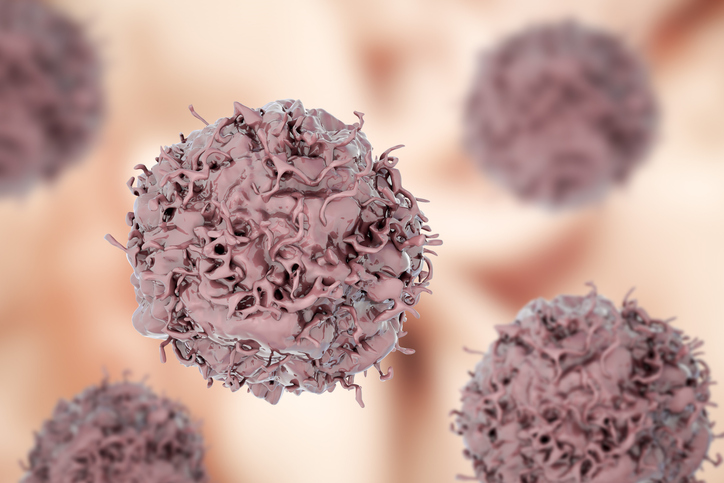Dr. Thomesha Smoot Barton knew becoming a practicing physician wouldn’t be easy.
”You know that you’re going to work hard and you’re not going to sleep a lot going into it,” she said.
Still, she added, ”You can’t really prepare yourself to be sleep deprived.”

With the Rise of AI, What IP Disputes in Healthcare Are Likely to Emerge?
Munck Wilson Mandala Partner Greg Howison shared his perspective on some of the legal ramifications around AI, IP, connected devices and the data they generate, in response to emailed questions.
Last year, the Akron Beacon Journal shared the stories of four new doctors-in-training at Summa Health System as they began their medical careers.
All medical school graduates are required to finish a supervised residency program lasting three to five years in the specialty of their choice before practicing on their own.
The first year as interns is arguably the toughest, as new doctors adjust to grueling schedules and begin putting what they learned in medical school to use in a hospital setting.
In fact, the long hours clocked by residents nationwide — particularly first years — are now the focus of scrutiny.
The Accreditation Council for Graduate Medical Education recently proposed limiting shifts for first-year residents to 16 hours. For more senior residents, shifts would be capped at 28 hours, down from 30.
The changes would be effective in July 2011.
Seven years ago, the accrediting body for the nation’s medical residency programs limited shifts to about 80 hours a week, with individual shifts capped at 30 hours. Before then, residents in some spe
cialties logged as many as 120 hours a week.
But studies suggest those limits aren’t enough to prevent resident fatigue and potential errors.
Drs. Thomesha Smoot Barton, Colin and Katie Drolshagen and Chris Myer know firsthand the benefits and challenges of those long shifts, having recently completed the first year in their selected programs.
The doctors-in-training recently looked back on their first year in medicine and shared updates about their new responsibilities as second-year residents.
Dr. Smoot Barton
Smoot Barton experienced both the joy of birth and the sadness of death during her first year as an obstetrics and gynecology resident.
During the intern year, new physicians typically spend some time in their selected specialty but also rotate to other areas of hospital as part of their training.
While working on a rotation in February in the intensive-care unit at Summa Akron City Hospital, Smoot Barton had to pronounce a patient dead for the first time. An internal medicine resident with more experience helped her with the process.
Throughout her first year, the Akron native also helped bring hundreds of babies into the world. Smoot Barton estimates she assisted with about 300 deliveries, about a third of which were Caesarean sections.
”I’m definitely glad I’m doing what I’m doing,” she said.
The toughest were the rare times when a mother had serious complications or a baby died, said Smoot Barton, 26, a graduate of the Northeastern Ohio Universities Colleges of Medicine and Pharmacy.
”You’re never really prepared for a baby to die,” she said.
Smoot Barton relies on her Christian faith to help her with the challenges of residency.
”Truthfully, the whole process is faith-building,” she said.
This year, she’s spending all her time in different rotations within obstetrics and gynecology. As a second-year resident, she’s expected to take more responsibility and manage the care of patients in labor and delivery.
”The main thing with second year is you have a ton more responsibility,” she said. ” . . . Now you’re supposed to know stuff. You don’t have an excuse.”
Drs. Drolshagen
The Drolshagens are sharing their residency experience while also sharing the responsibilities of raising two young children.
Colin Drolshagen is completing a three-year family medicine residency, while his wife, Katie Drolshagen, is in a four-year pathology program.
The couple, both 27, got married after their first year in medical school at Creighton University in Nebraska and have two children: Madeleine, 2, and Audrey, 1.
They’ve been relying on babysitters and her family, who live nearby, to help watch their daughters when they’re putting in long hours at the hospital.
”Balancing is harder than I thought,” Katie said. ”Residency with kids is definitely a big challenge. It’s that balance of trying to find time to learn and study and have some time to be a good parent and spouse.”
During her first year, Katie spent much of her time in the gross lab, where residents document initial or ”gross” impressions of biopsies and specimens. She assisted with about 20 autopsies, well on her way to the 50 she must complete.
She also got exposure to pathology focusing on the study of blood and lymph nodes — a subspecialty she’s now considering pursuing.
As a family medicine resident, Colin spent his first year rotating among different areas, including ER, ICU, surgery, internal medicine, obstetrics and gynecology and pediatrics at Akron Children’s Hospital.
”It’s a pretty steep learning curve,” he said. ”You have a lot of textbook things that you know and then being put in a position to use them, it’s a learning curve. You appreciate having good fellow residents and attendings that first year.”
This year, he spends more time in the outpatient family medicine clinic at City Hospital, where he has patients assigned to him.
”It’s been nice,” he said.
Dr. Myer
No bones about it, Dr. Chris Myer is glad to be spending most of his time these days working in orthopedics.
As a first-year orthopedic resident, Myer, 27, was required to gain experience working in other areas of the hospital, along with his chosen specialty.
The exposure to critically ill and injured patients in the ICU, in particular, was important to help him learn about complications and other conditions his patients might face, Myer said.
”Your comfort level after that rotation grows exponentially,” he said.
He now spends all his time rotating among different subspecialties in orthopedics, which focuses on diagnosing and treating problems with bones, joints or muscles.
This year, he’s getting more opportunities to work with his brother, Dr. Dan Myer, a fifth-year or ”chief” orthopedic resident at Summa.
”I’m getting to scrub in on a lot of cases with him,” he said. ”It’s been a lot of fun.”
His father, Dr. Tim Myer, also is an orthopedic surgeon who practices at Summa and occasionally gets to supervise him.
”He really doesn’t treat me any different than he does anyone else,” he said.
Myer continues to be on call about eight to nine times per month.
Those 30-hour shifts spent at the hospital are draining but beneficial, he said.
”After a 30-hour day, you just feel wiped out at the end of it,” Myer said. ”But when I’m on call, I feel that’s when I see the most and learn the most. You see everything.”
Cheryl Powell is a health reporter for The Akron Beacon Journal, the daily newspaper in Akron and a syndication partner of MedCity News.














